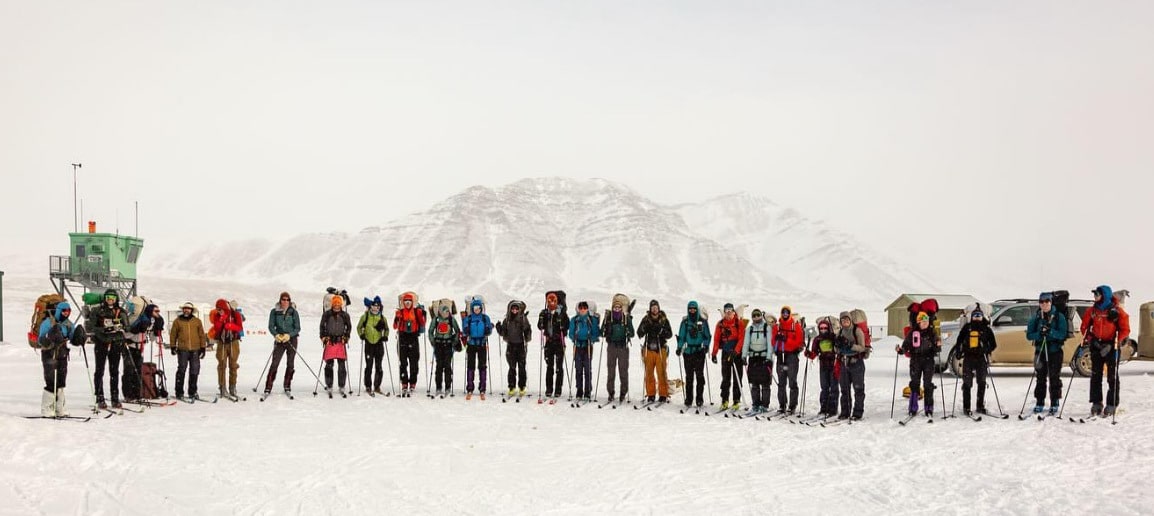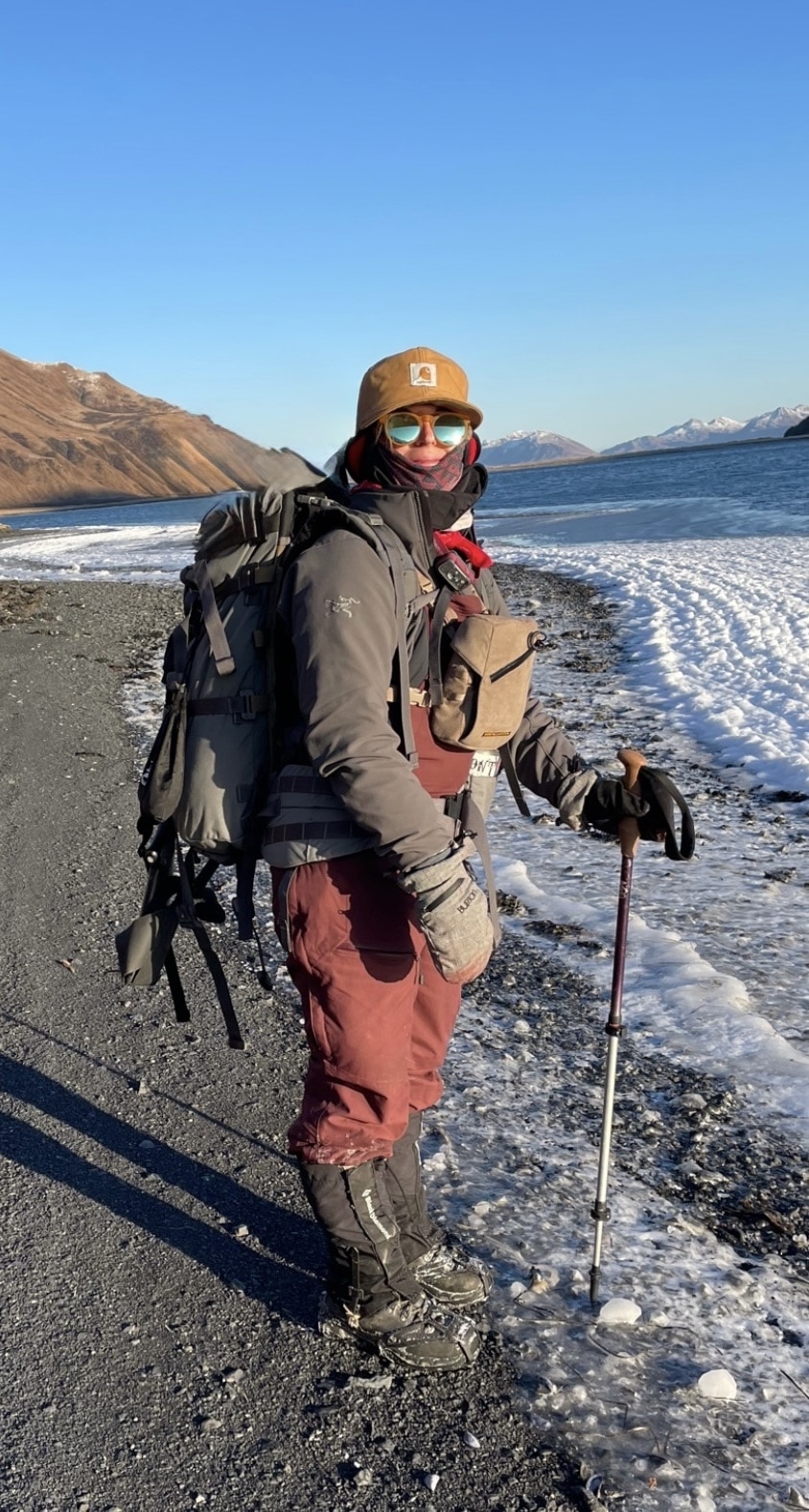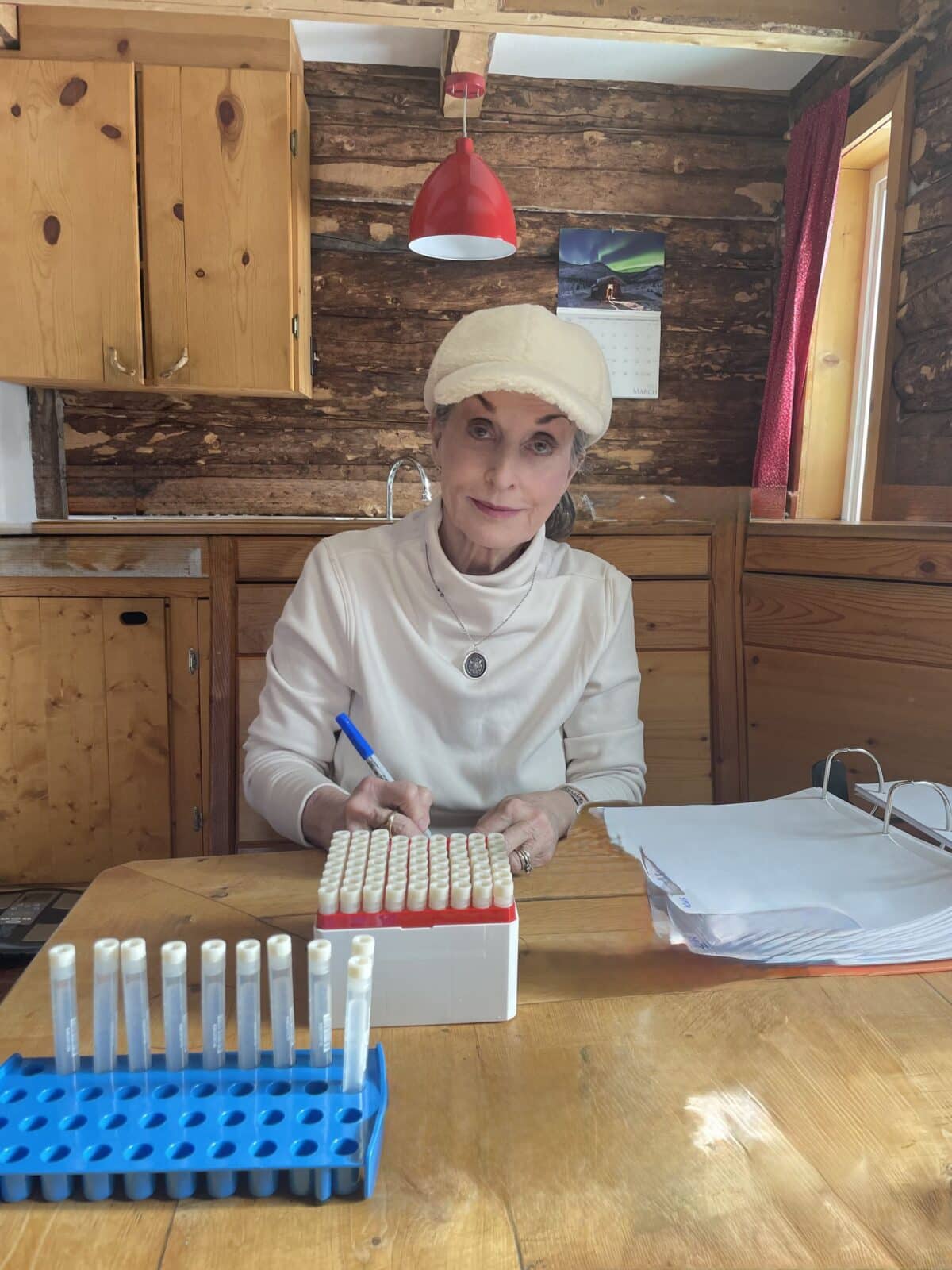In a nutshell
- During Arctic expeditions, women exhibit higher metabolic efficiency compared to men when their energy consumption is measured in relation to the overall weight they carry.
- Even though they burned between 5,000 to 7,500 calories each day due to the intense cold, all participants—both men and women—kept their muscle mass intact over the seven-day expedition.
- Women might have an "Arctic shift" advantage wherein their bodies start generating heat due to cold more efficiently at lower temperatures, possibly decreasing energy requirements in extremely chilly conditions.
MISSOULA, Mont. — According to recent Pentagon-backed studies, female athletes could possess an unseen edge regarding stamina and toughness in extremely frigid conditions. The findings reveal that although males expended greater overall energy during an Arctic trek, females showed superior efficacy per unit of weight carried across one of our planet’s harshest terrains.
The Ultimate Wilderness Challenge
The Alaska Mountain Wilderness Ski Classic stands out from ordinary competitions. This event pushes individuals to their extremes as they cover distances between 220 to 260 kilometers across rugged Alaskan mountains during harsh arctic winters without following marked paths. Contestants must depend entirely on personal route-finding abilities and gear selection since there are no set courses, support points, prizes, or accolades involved here. Instead, this contest highlights sheer resilience amidst severe chilliness.
The research followed 20 subjects (eight females and twelve males) throughout an unplanned Arctic adventure. These remarkable sportsmen withstood extreme cold down to -36°C, fierce winds causing wind chill factors of -49°C, and utter detachment from contemporary amenities.
"Few studies have examined gender-specific physiological reactions under extreme cold "under specific conditions," as mentioned in the study’s introductory section penned by the researchers, which was published in Frontiers in Physiology .
Directed by scientists from the University of Montana and the University of Wisconsin, this research employed doubly labeled water—an approach involving subjects consuming water with traceable isotopes—to gauge energy expenditure This technique monitors the exit of isotopes from the body, enabling researchers to determine carbon dioxide output and energy expenditure with great accuracy. Assessments of body composition conducted before and following the expedition revealed the physical impact on the participants.

The Female Efficiency Advantage
Men burned considerably more energy each day (31.1 megajoules compared to women’s 20.8 megajoules). Nevertheless, after adjusting for fat-free mass—which represents the bodily tissues involved in metabolism—the figures became comparable: 0.45 megajoules per kilogram of fat-free mass for men and 0.42 for women.
This phenomenon has been noted in various contexts yet seldom under such severe circumstances. The aspect that renders this research especially significant is the discovery concerning efficiency in relation to overall weight carried.
The study found that the ratio of energy expended to total load (which includes body weight and backpack weight) was notably lower for women compared to men throughout the journey, indicating "higher functional efficiency in female participants during this expedition." Essentially, women managed to derive greater benefit from every calorie consumed, taking into account the additional weight they carried.
"Our findings align with research indicating that women may exhibit greater resistance to performance-related tiredness," the researchers observe, citing earlier studies that suggest women could be less prone to peripheral fatigue compared to men.
This pattern aligns with other research suggesting that women might process specific elements of endurance differently. Certain studies indicate this phenomenon. might use fat As a fuel source more efficiently during extended workouts — potentially beneficial in multiple-day situations where saving energy is crucial.

Extreme Cold Survival Techniques
An unexpected discovery involved water consumption Participants consumed between 30-50% less water compared to athletes competing in warmer environments. This was not merely due to personal choice; obtaining liquid water becomes difficult in sub-zero conditions, and excessive perspiration can become dangerous as the moisture may freeze upon the body.
Athletes needed to meticulously juggle exercise levels and clothing layers. Excessive effort causes sweat that might turn into ice; too little action increases the risk of hypothermia due to inadequate warmth production.
Even though they burned 5,000-7,500 calories each day for 7-8 days, the participants managed to keep their weight stable. muscle mass Throughout the mission, showcasing the impressive capability of the human body to protect vital tissues even under severe circumstances.

These discoveries match those from other studies conducted in extreme environments. The researchers elaborated in a press statement: "When examining physical resilience among participants in the Yukon Arctic Ultra (YAU), which stands as the most extended and frostiest ultra-marathon globally... even though men possess higher quantities of muscle mass and lower levels of body fat than women, the count of completers remains nearly identical across genders."
This study questions preconceived notions regarding gender disparities in enduring physical activities and underscores the significance of effectiveness rather than sheer force in critical scenarios—indicating skills in females that might have been traditionally overlooked because of insufficient investigation.
"Even though men have traditionally held dominant positions in protective roles within society, recent statistics from endurance activities carried out in harsh conditions indicate that women "may be just as, if not more, metabolically resilient when faced with physical and nutritional stress," the researchers conclude.
Paper Summary
Methodology
Twenty adults (eight women averaging 41 years old and twelve men averaging 38 years old), all having nearly identical BMIs around 22.7-22.8 kg/m², took part in the Alaska Mountain Wilderness Ski Classic, an unassisted journey held about 200 kilometers above the Arctic Circle. Scientists employed the doubly labeled water technique for gauging their overall calorie burn and hydration levels throughout this challenge. They evaluated each participant’s body makeup via multi-frequency bioelectrical impedance both prior to and following completion of the trek. Initial and final backpack loads were also documented. By factoring in these variables, investigators determined how many calories individuals burned per unit of lean tissue as well as based on combined personal weight and carried gear. This arduous adventure spanned roughly seven to eight days during which adventurers skied between 220–260 kilometers under extreme cold conditions—temperatures plummeted down to as low as -36°C but never rose higher than -6°C.
Results
Men showed higher overall daily energy expenditure at 31.1 megajoules (MJ), as opposed to women who averaged 20.8 MJ per day. Nonetheless, when adjusted for lean body mass, their metabolic rates were nearly identical; women had an average of 0.42 MJ/kg of FFM per day versus men with 0.45 MJ/kg of FFM per day. The rate of energy use related to carrying weight was notably less in women than in men, indicating potential superior work efficiency among females under such circumstances. Additionally, fluid loss was approximately 30-50% below levels seen in sportspeople training in hotter climates—likely because of restricted access to hydration, regulated exertion to minimize perspiration, and cooler environmental temperatures. In spite of this significant caloric output, neither gender experienced a reduction in muscle tissue.
Limitations
The research faced multiple constraints: although discussions with participants suggested they obtained just 4-5 hours of rest each night, sleep patterns remained unmeasured. Monitoring of skin and core temperatures was also omitted, possibly missing insights into variations in temperature regulation techniques. Additionally, menstrual cycles among the women involved were neither regulated nor assessed, an oversight that may impact their metabolic and hormone levels. Furthermore, the investigation partially depended on bioelectrical impedance for assessing body composition, a method less precise than some sophisticated alternatives currently available.
Funding/Disclosures
The study received support from the U.S. Department of Defense, specifically through the Air Force Research Laboratory under grant number FA8650-19-C-6124. The authors stated that they had no competing interests; however, one contributor mentioned serving as part of the editorial team for Frontiers during the paper’s submission phase.
Publication Information
The study titled 'Sex-specific Energy Expenditure During the Alaska Mountain Wilderness Ski Classic: Insights From an Arctic Winter Expedition' was published in Frontiers in Physiology (article 1543834, volume 16) dated April 29, 2025. The contributors listed are Melynda S. Coker, Michelle N. Ravelli, Timothy C. Shriver, Dale A. Schoeller, Dustin R. Slivka, Brent C. Ruby, and Robert H. Coker from the University of Montana and the University of Wisconsin.
Post a Comment for "Why Women May Have the Edge in Extreme Cold Expeditions"